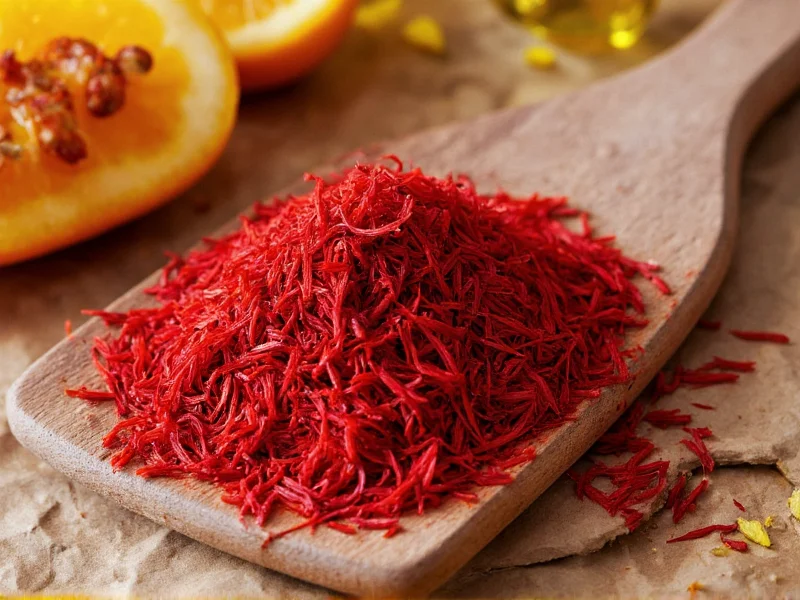Understanding Saffron Measurements and Value
When discussing ounce of saffron measurements, it's crucial to recognize why this spice commands such premium pricing. Saffron comes from the delicate stigmas of the Crocus sativus flower, with each blossom producing only three threads. Harvesting requires approximately 75,000 flowers to yield a single pound of dried saffron, explaining its status as the world's most expensive spice by weight.
Historical context further underscores saffron's enduring value. Documented cultivation milestones include:
- 7th century BC: Earliest records in Assyrian botanical treatises
- 300 BC: Integration into Greek and Roman culinary traditions
- 8th century AD: Introduction to Spain by Moorish traders
- 1993: Establishment of ISO 3632 international quality standards
Source: Comprehensive review in Journal of Food Science and Technology (NCBI)
https://www.ncbi.nlm.nih.gov/pmc/articles/PMC3577449/
Saffron Weight Conversion Essentials
For precise culinary applications, understanding saffron measurement conversions is vital. The standard conversion chart appears below:
| Measurement | Equivalent | Approximate Threads |
|---|---|---|
| 1 ounce | 28.35 grams | 14,000-16,000 |
| 1 gram | 0.035 ounces | 500-600 |
| 1 pinch | 0.1-0.5 grams | 50-300 |
| 1 teaspoon | 0.5-1.0 grams | 250-600 |
Why Saffron Commands Premium Pricing
The cost per ounce of saffron reflects its labor-intensive harvesting process. Each saffron thread must be hand-picked at dawn when the flowers bloom, then carefully dried to preserve flavor compounds. This meticulous process, combined with limited growing regions (primarily Iran, Spain, and India), creates natural scarcity. When evaluating how much does an ounce of saffron cost, consider these quality indicators:
- Crocin content (determines color strength) - higher quality shows deep red color
- Moisture content - should be below 12% for proper preservation
- Thread integrity - whole threads indicate careful handling
- Aroma profile - high-quality saffron has distinctive honey-like fragrance
Practical Usage Guidelines for Home Cooks
Most home chefs wonder how long does an ounce of saffron last in practical terms. The answer depends on usage frequency, but a single ounce typically serves 50-200 recipes depending on portion size. Traditional Spanish paella requires about 0.5 grams per serving, while Persian rice dishes might use slightly more. For everyday cooking, a pinch (approximately 0.1 grams) suffices for most applications.
When working with saffron measurement for cooking, always toast threads lightly before crushing and steeping in warm liquid for 15-20 minutes. This process maximizes flavor extraction and ensures even distribution throughout your dish. Never add saffron directly to dry ingredients, as this wastes precious threads and creates uneven flavor distribution.
However, saffron's performance varies significantly by cooking context. According to UC Davis's spice research program, optimal results occur in dishes with:
- Moderate cooking duration: Maximum 25 minutes exposure to heat (beyond which crocin degrades by 50%)
- Neutral pH environment: Between 5-7 (acidic conditions below pH 4 accelerate color loss)
- Protected from direct flame: Always steep in liquid before adding to dish
These constraints make saffron ideal for rice dishes like paella but require careful adaptation for tomato-based sauces. For acidic recipes, add saffron during the last 10 minutes of cooking to preserve potency.
Source: University of California, Davis Spice Research
https://spicesandflavors.ucdavis.edu/spices/saffron
Smart Purchasing Considerations
Before buying saffron by the ounce, consider these practical factors:
- Storage requirements - saffron degrades when exposed to light, heat, or moisture
- Usage frequency - occasional cooks might prefer smaller 0.5-1 gram packages
- Quality verification - request lab reports for crocin and safranal content
- Expiration timeline - properly stored saffron maintains peak quality for 2-3 years
International Quality Grading Standards
Verification through ISO 3632 testing ensures authenticity. The standard categorizes saffron by laboratory analysis of key compounds:
| ISO Grade | Crocin (Color) | Picrocrocin (Taste) | Safranal (Aroma) |
|---|---|---|---|
| I | ≥ 190 | ≥ 70 | ≥ 20 |
| II | 150-189 | 50-69 | 15-19 |
| III | 110-149 | 30-49 | 10-14 |
Source: European Spice Association (ESA) interpretation of ISO 3632-1:2019
https://www.europeanspice.org/saffron-iso-3632/
Many consumers ask is buying saffron by the ounce worth it. For serious cooks or those who prepare saffron-intensive dishes regularly, purchasing by the ounce offers better value per gram. However, beginners should start with smaller quantities to ensure proper storage and usage before committing to larger purchases.
Proper Storage Techniques for Maximum Longevity
To preserve your ounce of saffron investment, follow these storage guidelines:
- Transfer saffron to an airtight container immediately after purchase
- Store in a cool, dark place away from heat sources
- Maintain consistent temperature (fluctuations degrade quality)
- Consider dividing large quantities into smaller portions to minimize air exposure
- Never store saffron in the refrigerator due to moisture risks
When stored correctly, high-quality saffron maintains its distinctive aroma and coloring power for 2-3 years. Check periodically for fading color or diminished fragrance, which indicate degradation. Remember that how many threads in an ounce of saffron matters less than thread quality and proper storage for optimal culinary results.
Common Misconceptions About Saffron Measurements
Several myths persist regarding saffron weight conversion that deserve clarification:
- Myth: All saffron threads weigh the same regardless of quality
- Reality: Higher quality threads contain more active compounds per gram
- Myth: Volume measurements (teaspoons) provide accurate saffron portions
- Reality: Weight measurements ensure consistent results due to thread density variations
- Myth: An ounce of saffron powder equals an ounce of threads
- Reality: Powdered saffron often contains fillers and loses potency faster than whole threads
Understanding these distinctions helps explain why professional chefs always measure saffron by weight rather than volume when precision matters.











 浙公网安备
33010002000092号
浙公网安备
33010002000092号 浙B2-20120091-4
浙B2-20120091-4